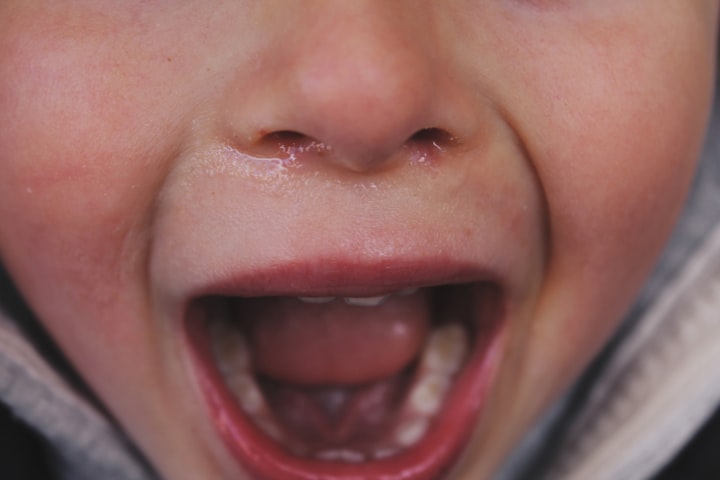The fool-proof formula for meltdown-free outings
The secret to meltdown-free outings with your autistic/neurodivergent child is actually pretty simple.

Is actually a pretty simple formula, but it’ll save you a ton of headaches (and save your child a ton of distress). Whether you've got an autistic child, an ADHD kiddo, a SPD/sensory-sensitive kid, or even a neurotypical child, these tips will help you have a successful* trip to the store, playground, or anywhere else you need to go.
(Please keep in mind, these are general tips. I am happy to provide more specific tips for specific locations/outings, if you comment or contact me below!)
Here's the secret to meltdown-free outings (as tested and tried by me and my "level 3 nonverbal" kiddo):
- Make sure your child has slept/rested prior to going out. Best times for outings are early in the morning after your kiddo first wakes up, or after their nap. (Pro tip: these are also usually the least busy times for most businesses, which means less sensory overload from noisy crowds of people and whatnot.)
- Full bellies help kids regulate. Be sure your child has eaten prior to leaving, and take emergency snacks with you (or be prepared to pick up something while you’re out). Stay on top of your child’s hunger, it can make the difference in preventing meltdowns.
- Clean bottom patrol. Make sure your child has a clean diaper/pull-up on before going anywhere. If they’re potty trained, be sure they’ve used the restroom. Always bring diapering supplies, even if it’s just a short trip.
- Take breaks. Let your kiddo stretch their legs, shake out their silliness, do jumping jacks, run around a little, or whatever they need to do to manage their energy. Take favorite toys with you, and allow your child to stim as much as they need.
- Ignore the Judgy McJudgersons. Don’t worry about what people think of your family. What matters is that your family is spending time together and that your children’s needs are being met.
- Dress comfy. You’ll all feel more relaxed if you dress comfortably instead of for show. Yes, you can take your child to a play or fancy restaurant wearing sweatpants. Their comfort is more important than FancyPants McGee and their blank stares.
- Use visual aids. A visual schedule, timers, verbal reminders, and countdowns can be a godsend for transitions. Use everything you can to help your child understand where you're going and when you'll be leaving. A lot of transition-related meltdowns are due to anxiety, because your child doesn't know where you're going or what's happening.
- Be extremely patient. This applies whether your child is "verbal"/nonspeaking or not. Remember, outings are even harder for them than they are for you. So reduce as much pressure on them as possible. Remove sensory triggers whenever possible. See things from their perspective. Be on their team. People-ing is hard!
If your child is nonverbal/nonspeaking, and/or elopes/runs away (like mine)…
- Transfer your child directly from the car to the grocery cart or stroller. If you’re going somewhere (like the playground) that they’ll be roaming free, choose enclosed areas you can get to them easily, like fenced or indoor playgrounds. (It’s always best to figure out *why* your child elopes, but if you’re not sure why, these are some tried and true strategies to keep them safe.)
- Use all the visual aids, especially a first/then board. Talk about things and show your child videos beforehand. Let them know what they’ll be doing.
- Use sign language and labeling. Hopefully you’ve already incorporated some simple sign language and labeling into your child’s every day life. By “labeling”, I mean pointing to things and telling your child what they are in a relaxed and fun way. This helps expand vocabulary a lot — and remember, even if your child isn’t *saying* words, doesn’t mean they don’t *know* words. (There’s a difference between vocalized vocabulary and latent vocab). For example, my son knows “car”, “house”, “toys” (our codeword for the store), “eat”, and “slide” (our codeword for the playground. With this base of communication, I can tell him “We’re going to eat and then slide!” and he knows exactly what I’m talking about and can get excited. He knows “car” is the way we will go do those things.
*“Successful” doesn’t mean that your child has no challenges or that absolutely no meltdowns happen. It’s important to reframe what a “successful” outing looks like for you. Successful to me is my son quickly recovering from distress and things not turning into a meltdown. Him having fun and enjoying himself the majority of the time is also successful in my book. (Even better if he enjoys himself the whole time!) The most important part is meeting your child’s needs so they don’t have to meltdown. I can recall people staring at us funny in Sam’s Club once; we were praising my son for how well he was doing in the store. To outsiders, it looked like a kid aggressively throwing things onto the conveyor belt, making loud noises, etc. But to me, it was a huge win! It was a huge success! Because he’d been regulated and happy for the majority of the trip, he was just starting to get a bit restless, and we were out the door to go home. To me, that was major progress, because I knew what it *used* to be like when we’d go out. It used to be multiple meltdowns and tantrums and him being miserable the whole time. It’s taken years of employing this strategy to get here, and sometimes I still forget a step or two and it causes him distress. So accept growth as success too. Your child is doing the best they can in a world that is not built for them. You’re doing your best, too!
About the Creator
Jeryn Cambrah
A neurodivergent writer, content manager, designer, author, poet, and human. Trying to make the world a little bit better -- one word at a time.






Comments
There are no comments for this story
Be the first to respond and start the conversation.